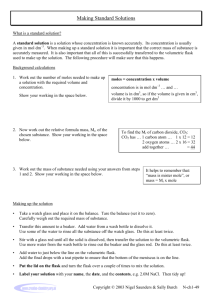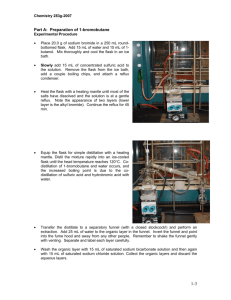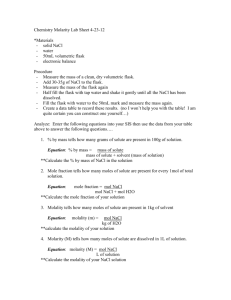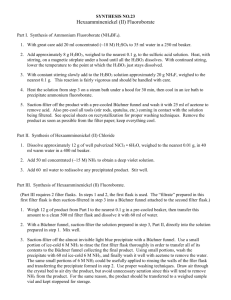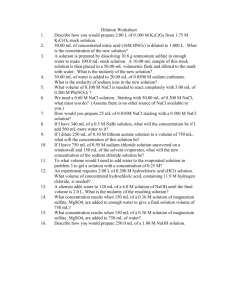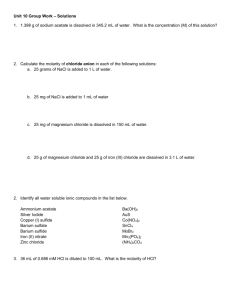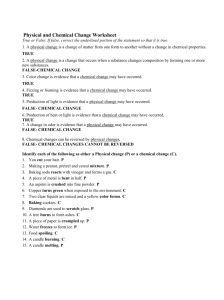pahar
advertisement
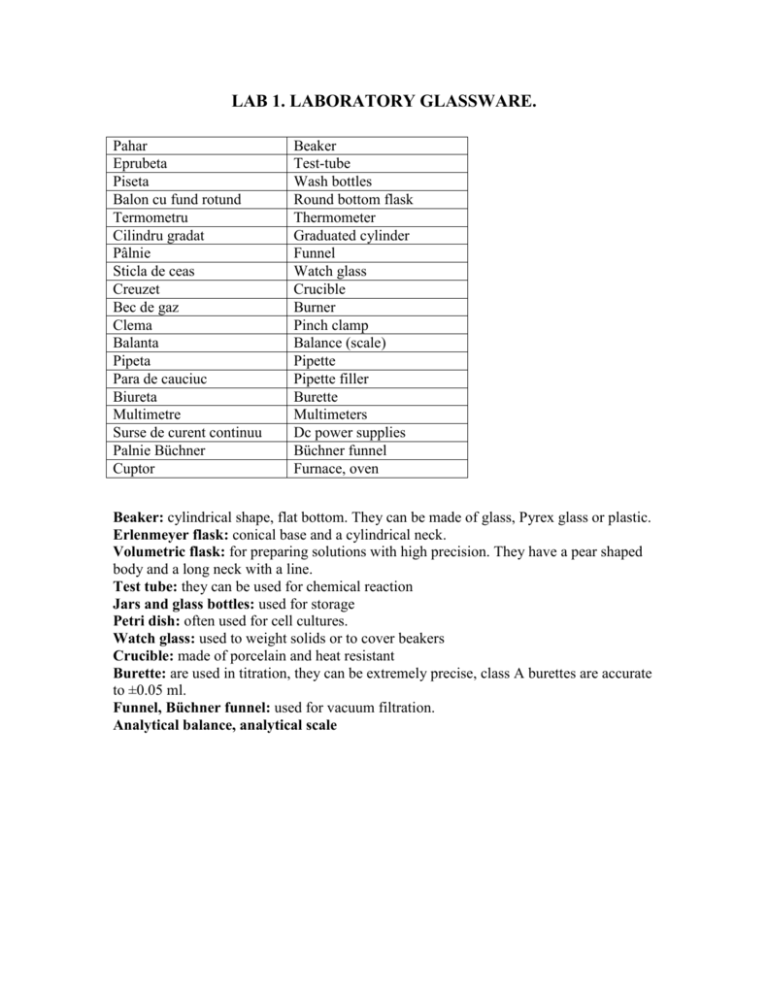
LAB 1. LABORATORY GLASSWARE. Pahar Eprubeta Piseta Balon cu fund rotund Termometru Cilindru gradat Pâlnie Sticla de ceas Creuzet Bec de gaz Clema Balanta Pipeta Para de cauciuc Biureta Multimetre Surse de curent continuu Palnie Büchner Cuptor Beaker Test-tube Wash bottles Round bottom flask Thermometer Graduated cylinder Funnel Watch glass Crucible Burner Pinch clamp Balance (scale) Pipette Pipette filler Burette Multimeters Dc power supplies Büchner funnel Furnace, oven Beaker: cylindrical shape, flat bottom. They can be made of glass, Pyrex glass or plastic. Erlenmeyer flask: conical base and a cylindrical neck. Volumetric flask: for preparing solutions with high precision. They have a pear shaped body and a long neck with a line. Test tube: they can be used for chemical reaction Jars and glass bottles: used for storage Petri dish: often used for cell cultures. Watch glass: used to weight solids or to cover beakers Crucible: made of porcelain and heat resistant Burette: are used in titration, they can be extremely precise, class A burettes are accurate to ±0.05 ml. Funnel, Büchner funnel: used for vacuum filtration. Analytical balance, analytical scale WEIGHING A LIQUID, POWDER OR GRANULAR SUBSTANCE 1. Place the weighing container on the balance pan and close the doors. 2. Tare the container. The display will show zero. This allows the mass of your sample to be read directly. 3. Add the substance to be weighed, close the chamber doors and read the display to find the mass of your sample. MEASURING A VOLUME OF SOLUTION A characteristic of liquids in glass containers is that they curve at the edges due to the surface tension. This curvature is called the meniscus. When you read the volume your eye should be at the same level with the liquid. Always read the bottom of the meniscus. PREPARING CHEMICAL SOLUTIONS Solute - The substance which dissolves in a solution. Solvent - The substance which dissolves the solute to form a solution. For example, in a sugar and water solution, water is the solvent; sugar is the solute. Mole - A fundamental unit of mass. 1 mole contains 6.023 x 1023 molecules of that substance. (Avogadro's number NA) Solution 1: Weight percentage c% Formula md 100 ms Example: A 10% NaCl solution has ten grams of sodium chloride dissolved in 100 ml of solution. Procedure: Weigh 10g of sodium chloride. Pour it into a graduated cylinder or volumetric flask containing about 80ml of water. Once the sodium chloride has dissolved completely (swirl the flask gently if necessary), add water to bring the volume up to the final 100 ml. Caution: Do not simply measure 100ml of water and add 10g of sodium chloride. This will introduce error because adding the solid will change the final volume of the solution and throw off the final percentage. Solution 2: Molar Solutions Formula c M n m V MV Examples: The molecular weight of a sodium chloride molecule (NaCl) is 58.44, so 1 mole is 58.44 g. If you dissolve 58.44g of NaCl in a final volume of 1 liter, you have made a 1M NaCl solution Procedure: Weigh 58.44 g NaCl. Pour it into a volumetric flask with the volume of 1 liter. Fill the flask with distilled water until the volume mark.
